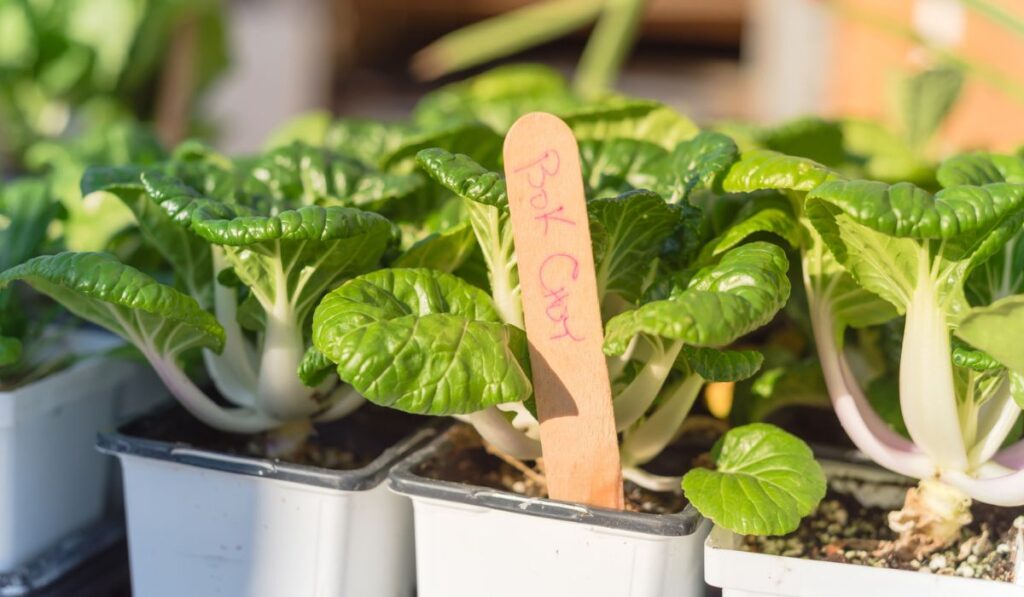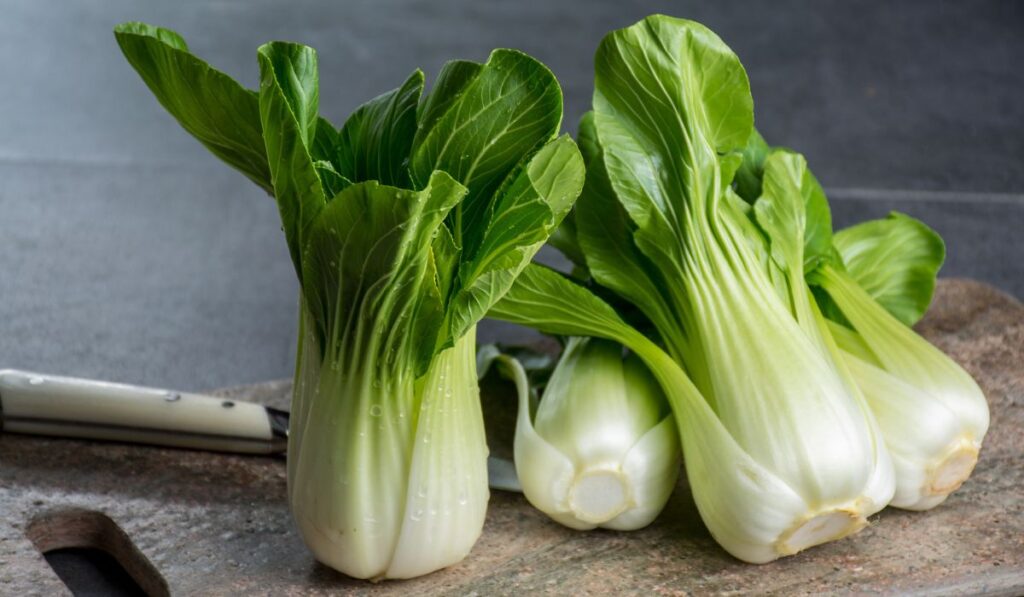Bok choy is a versatile vegetable that can be easily added to salads or eaten on its own as a snack. It therefore comes as no surprise that you’re considering growing some in your garden! But before you get started growing your own bok choy, when is the growing season?
Bok Choy is unique in that it has two growing seasons and can be planted twice per year. The first period is in the early spring, right after the last frost in your region. The second period is in late summer or early fall, typically late July through the end of August.
Curious about other things you can do to keep your bok choy plants thriving? Let’s look at some of the best growing methods for bok choy as well as some ways you can keep pests away from this crunchy vegetable.
When Can Bok Choy Be Planted Outside?

There are many great things about growing bok choy, especially the fact that it can be planted and harvested multiple times per year.
For best results, you’ll want to plant your bok choy early in the spring, and then again in the late summer or fall. You will want to coordinate the spring planting time to be right around the last frost for the season in your region.
If you live in an area where the last spring frost is late, such as in April or May, you will want to start your bok choy in the kitchen as seedlings four weeks prior to planting.
For the fall planting, hold off on planting your bok choy until the temperatures have cooled a bit, typically late July to August.
In extremely warm places, such as in the south of the United States, you’ll want to hold off even further, keeping your bok choy in the kitchen until early September.
Does Bok Choy Need Full Sun?
Bok Choy is a heat-adverse plant, meaning it doesn’t need full sun. Instead, bok choy does best somewhere where it will get partial sun.
The only exception to this is for those who plant late in the fall. When the temperatures have cooled, bok choy can be planted somewhere where it gets full sun.
Be cautious, however, as bok choy needs to be grown in moist soil, so anywhere in your garden where the sun constantly dries the soil is too dry to grow a healthy plant.
Can Bok Choy Be Grown in Winter?
Bok choy is not usually harmed by frost or light freezes, but it will not survive, nor grow, in the snow. For this reason, all of your bok choy needs to be harvested before the winter season sets in.
One of the signs to watch for to know when you’re running out of time to harvest your bok choy is when the plant begins to ‘bolt.’ This is a stage of the plant’s life in which it stops growing usable parts and instead switches over to only growing flowers.
Bok choy flowers aren’t so nice to eat, and the plant becomes inedible once fully bolted, so once this process begins, you’ll need to harvest as soon as possible to salvage what’s left of the plant.
What Shouldn’t Be Planted With Bok Choy?

Unfortunately, while bok choy is delicious to humans, it is also tasty for many bugs. In order to save your bok choy from pests, there are several plants you should avoid planting with bok choy. They are as follows:
- Brussels Sprouts
- Broccoli
- Dill
- Cauliflower
- Cabbage
- Tomatoes
- Strawberries
All of the above plants attract the same pests as bok choy, so if you plant them together, you’re basically asking for an infestation.
How Do You Keep Bugs From Eating Your Bok Choy?
If you’ve seen some bugs near your bok choy, don’t panic just yet! There are a few things you can do to keep bugs away.
1. Plant Companion Plants
Planting companion plants, like carrots, celery, and kale, can help to keep the bugs that like your bok choy away. Most seasonings like thyme, and chamomile even help boost the flavor of your bok choy while they keep the bugs away.
2. Use Mulch
Bok Choy needs to grow in damp soil, which is a natural breeding ground for bugs. Deter mature bugs from laying eggs in the soil near your plant by covering the soil with mulch. This will also help keep your plant from bolting.
3. Take Care of Your Plants
Check on your bok choy often, removing dead plant debris from the area. Also, remove any dead leaves off the bok choy itself as these are magnets for bugs.
The Final Word
Overall, growing bok choy can be a bit of a challenge, but if you plant it during the right time of year and choose the right plants to place beside it, chances are you’ll have some amazing bok choy come fall!
Just remember to monitor the bok choy, clear away any debris, and watch for any signs of bolting, and soon you’ll find that these plants aren’t as finicky as you once thought.
